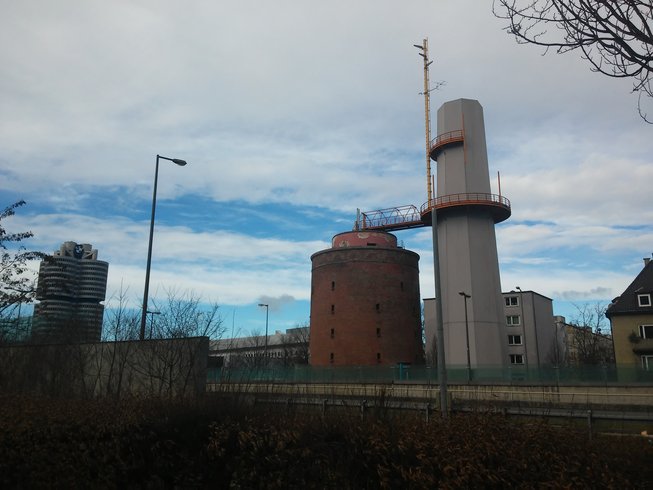Week 1
Munich, Germany
Do you know what is GOP? If one searches for the acronym directly in Wikipedia and your computer is set up in English, then probably the delivered hit is: “The Republican Party, commonly referred to as the GOP (abbreviation for Grand Old Party).” However, this post do not make reference to that GOP……“ No. I do not refer to that GOP.
To make my question clear is: Do you know what is GOP in Germany? Now there are different options in Wikipedia, and the one I am referring to is the acronym of Georgspalast, which today is a music hall – theater.
Originally the Georgspalast opened in Hanover, at the beginning of the 20’s. It was a “Café-Restaurant Georgspalast“ where concerts with orchestras were offered and people could go to dance. Due to the second wold war, the GOP was closed on Oct 9, 1943. It reopen its doors on May 27, 1948 as a Varieté-Theather (that is music hall – theater) and it was quite successful in Hanover.
In 1962, the GOP closed its doors again because it was difficult to compete with “new” ways of entertainment such as TV. (side note: this sounds to me familiar). It was not until 30 years later, in 1992, when the GOP Varieté-Theater opened its doors again focusing on family entertainment and changing constantly its spectacles. In 1996, GOP started to expand in other parts of Germany. In Munich opened its doors in 2008. The building selected to be the GOP of Munich has also its history. It was the “Kleinen Komödie”, which was already a theater with tradition in Munich since 1946.
So, on 2.1.18 I was at the GOP Munchen to see “La Luna”
La Luna – GOP Varieté-Theater from GOP Varieté-Theater on Vimeo.
The place was intimate. We were on table 9, sits 1,2,3 and 4. Excellent sits in my opinion.
The show was homelike. It was professionally done and at the same time, it gave me a feeling to be a “home” circus. The artists were multi-talented and one could see the diverse roles they had on the play. For example: one can be an acrobat for a moment, then could act a bit, and follow to be a musician and later to help another of his colleges. It was nice to look at. This versatility made me feel the circus close and natural. It was nice! :).
Perhaps my feelings towards “La Luna” were also influenced by what I watched some days earlier on TV. The only program I watched was a function of THE amazing show of Cirque du Soleil O . What a production of “O” !!! It is just amazing !!! A circus with high technology involved.
“La Luna” has a good group of artists / acrobats and it is enjoyable to look at them. It does not have all that high tech, and it does not need it. One of the artists made me smile more often than the others, and she triggered my admiration, her name was Amelie Demay. She was so expressive and fun. Additionally, she seemed quite strong. Unquestionably, she has a well exercised and muscular body. No idea how old she is, but definitely she did not look the youngest member of the cast. This trigger my admiration even more when I saw her routines.
Once back home, I researched something briefly about her. The oldest article I found was from 1987 an interview in LA when Demay was 19 years old. Apparently, since young she has been strong, as the photos in getty_images illustrate.
Additionally, I found her name on the book: “Fall of the BIG TOP the vanishing American Circus” by David Lewis Hammarstrom. Those two brief readings, withing a proper research, but it made me realized that she is one of the first group of artists that worked at the Cirque Du Soleil. Interesting !!! I even found the following video of her performace back in the days.
In La Luna, Demay performs with her family. So, no wonder my feelings! everything adds up 🙂
Wasn’t it a special evening? I was in a historical place, enjoying a good spectacle with professionals in the art in a family environment. Of course my company was also very special, in particular the young lady that was siting next to me. 🙂
Thank you for the special evening!
— cais

